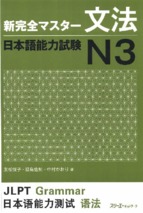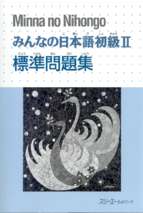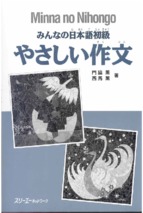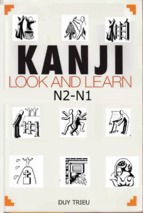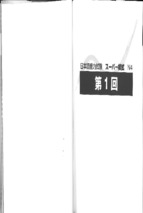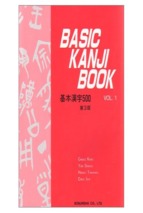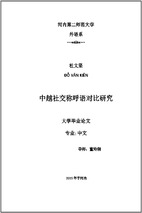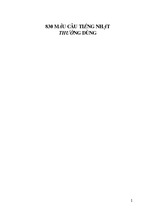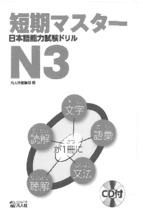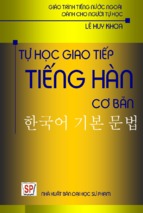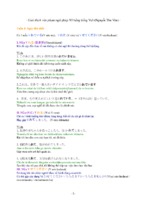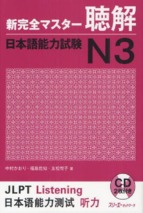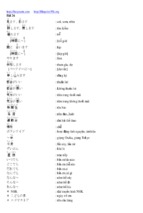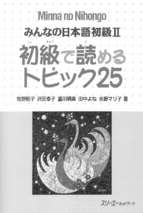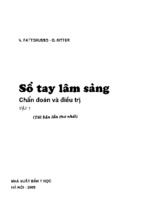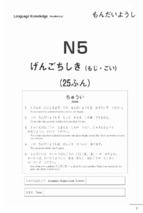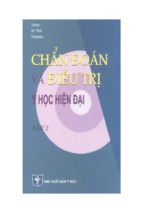Essential Grammar
For Korean as a Second Language
© 2004 All rights reserved by
Chul Young Lee
Version 2.3
Preface
Demand for the Korean langauge education as a second language is significantly increasing these days. The
Korean language is an agglutinative language and is sometimes recognized tricky to learn by the people who
speak a European language as their primary language. But depending on how systematical the education
method is, it can be efficiently learned with the aid of its scientific letter system Hangeul.
This book aims to provide the comprehensive rules and factors of the Korean language in a systematic way.
The grammar chapters contain most of the important basic rules so that you can build the essence to learn
Korean. This book can be used for self-learners who are learning Korean with other books and environment
and want a good grammar textbook. This book can be also used as a textbook in a Korean class, in which
case I recommend the instructors to provide replicating examples to the students and try to relate the
multiple chapters on the inflectional words with each other to maximize the efficiency of the education.
I hope this can contribute to the Korean language education to all the people who teach or learn Korean.
Chul Young Lee
이철영
2
CONTENTS
Part I. Alphabet & Basic Phonetics
Chapter 0: About the Korean Alphabet System …………………..…………………….…………. 5
Chapter 1: How to Compose a Syllable ……………………………………..……………………….. 6
Chapter 2: Korean Alphabet ………………………………………………………………………………. 7
Chapter 3: Important Rules for Pronunciation ………………………………………………..... 11
Part II. Basic Grammar
Chapter 4: Parts of Speech …..………………………………………………………………………….. 18
Chapter 5: Sentence Structure …………………………………………………………………………. 20
Chapter 6: Inflectional Words …………………………………………………………………………... 23
Chapter 7: Supplementary Inflectional Words …………………………..…………..……........ 28
Chapter 8: Irregular Inflectional Words ………………………………………………..……........ 32
Chapter 9: Attitudes …………………………………………………………………………………........ 38
Chapter 10: Postpositions ………………………………………………………………………..……… 41
Chapter 11: Designation ……………………………………………………………………………………. 44
Part III. Useful Expressions & Vocabularies
Chapter 12: 5W1H ……………………………………………………………………………………………. 47
Chapter 13: Frequently Used Basic Sentences …………………..…..……………………………. 48
Chapter 14: Numeral & Units .………………………………………………………………….………… 51
Chapter 15: Time .……………………………………………………………………………………………. 55
Chapter 16: Family …………………………………………………………………………………………… 57
3
Part I. Alphabet & Basic Phonetics
4
Chapter 0. About the Korean Alphabet System
The World's Most Scientific Writing System
The Korean Alphabet is known to be the most scientific writing system in the world. This letter system is
called Hangeul. Each character in Hangeul represents a unique sound in a systematic way, which makes it
very easy and clear to learn this letter system. This is why Korea’s literacy rate is extremely high.
Hangeul was developed in 1443 by King Sejong (1397-1450) who clearly stated the purpose of developing
this letter system. It was basically to let everyone in the nation to be able to read and wirte easily. He
developed the new letter system in an amazingly scientific and systematic way. He created the shapes of the
characters in a way that they resemble the shapes of the human organs when they are pronounced.
Hangeul is a state-of-the-art phoneme character system which consists of 10 basic vowels, 14 basic
consonants and some compound vowels and consonants, and you can write down whatever you hear in a
unique way. You typically do not have to ask how to spell something. This is possible because one character
in Hangeul is mapped to only one sound.
While you learn this letter system, you will be amazed to see how easy it is to learn and how powerful it is.
You could even apply Hangeul to another language without a big problem.
5
Chapter 1. How To Compose A Syllable
1. Why is Syllable Important in Korean?
Syllable is the unit of composing actual letters using the letter elements (consonants and vowels).
Once you become able to build a syllable by applying the consonants and vowels, you can write anything
you hear.
2. What does a Korean Syllable look like?
It is composed of three elements: Initial Sound (초성), Medial Sound (중성) and Final Sound (종성), as
you can see in the figure below.
INITIAL
[ 1 Consonant ]
MEDIAL
[ 1 Vowel ]
FINAL
[ 0, 1, 2 Consonant(s) ]
Figure 1 A Korean Syllable
3. Composing Syllables
See the example below:
Initial
Sound
(1 consonant)
한
Medial Sound
(1 vowel)
Final Sound
(1 consonant)
Figure 2 An example of a syllable
A syllable must have exactly 1 consonant as the initial sound and 1 vowel as the medial sound. A syllable
can be composed with or without the final sound (consonant). Sometimes there can be 2 consonants
located as the final sound.
Examples (보기)
Syllables without the final sound: 가, 나, 너, 뽀, 쭈, 야, 의, 왜
Syllables with 1 consonant as the final sound: 안, 녕, 합, 얌, 굉, 있, 낚, 꺾
Syllables with 2 consonants as the final sound: 않, 없, 앉
6
Chapter 2. Korean Alphabet
There are 14 basic consonants and 10 basic vowels.
1. Consonants (자음)
1) Basic Consonants
Consonant
Name
Value
Stroke Sequence
ㄱ
기역
[g/k]
ㄱ
ㄴ
니은
[n]
ㄴ
ㄷ
디귿
[d/t]
ㅡ
ㄷ
ㄹ
리을
[r/l]
ㄱ
ㄱ
ㄹ
ㅁ
미음
[m]
ㅣ
ㄱ
ㅁ
ㅂ
비읍
[b/p]
ㅣ
ㅣㅣ
ㅣㅣ
ㅅ
시옷
[s]
ㅇ
이응
[ŋ]
ㅈ
지읒
[j/g]
ㅊ
치읓
[t∫/ts]
ㅋ
키읔
[k]
ㄱ
ㅋ
ㅌ
티읕
[t]
ㅡ
ㅡ
ㅍ
피읖
[p]
ㅎ
히읗
[h]
ㅂ
ㅅ
ㅇ
ㅈ
ㅊ
ㅌ
ㅍ
ㅎ
7
2) Compound Consonants
Consonant
ㄲ
ㄸ
ㅃ
ㅆ
ㅉ
Value
‘k’ sound in sky
Name
쌍기역
‘t’ sound in start
쌍디귿
‘p’ sound in spy
쌍비읍
‘s’ sound in say
쌍시옷
strong/voiceless ‘j/g’ sound
쌍지읒
1) Every compound consonant is a fortis. Do not get confused with aspiration (ㅋ, ㅌ, ㅍ, ㅊ)
2) Do not get confused with double consonants which are combination of two different
consonants (ㄳ, ㄵ, ㄼ, ㄽ, ㄾ, ㄻ, ㅄ, and ㄿ).
2. Vowels (모음)
1) Basic Vowels
Vowel
Name
Value
Stroke Sequence
ㅏ
아
[a]
ㅣ
ㅏ
ㅑ
야
[ya]
ㅣ
ㅏ
ㅓ
어
[ә]
ㅕ
여
[yә]
ㅗ
오
[o]
ㅛ
요
[yo]
ㅜ
우
[u]
ㅜ
ㅠ
유
[yu]
ㅜ
ㅡ
으
[-]
ㅡ
ㅣ
이
[i]
ㅣ
ㅑ
ㅓ
ㅕ
ㅗ
ㅛ
ㅠ
8
2) Compound Vowels
Consonant
ㅐ
ㅔ
ㅒ
ㅖ
ㅚ
ㅟ
ㅢ
ㅘ
ㅝ
ㅙ
ㅞ
Value
Name
‘a’ sound in and
애
‘e’ sound in end
에
‘ya’ sound in yam
얘
‘ye’ sound in yes
예
[o] + [e]
외
‘we’ sound in we
위
ㅡ + ㅣ
의
‘wa’ sound in swallow
와
‘wo’ sound in wonderful
워
‘wa’ sound in wax
왜
‘we’ sound in wet
웨
3. Common Writing Rules
Writing a syllable should be done by the following rules:
1) Write in the following order: Initial Sound ► Medial Sound ► Final Sound
2) For each letter element, write from Top and from Left.
Polarity of Vowels (모음의 음양)
Positive Vowels: ㅏ, ㅑ, ㅗ, ㅛ,
and compound vowels including them
Negative Vowels: ㅓ, ㅕ, ㅜ, ㅠ, ㅡ ,
and compound vowels including them
Neutral Vowel: ㅣ
Vowel Accordance (모음조화): Vowels with the same polarity tend to stick together
in words (but this is not an absolute rule any more in modern Korean). For example, an
inflectional word with the stem with a positive vowel uses suffixes with a positive vowel.
<보기> 놀다 (to play) ▶ 놀 + 아요 = 놀아요
9
Two-Element Syllable Matrix with Basic Consonants and Basic Vowels in Order
가나다라마바사아자차카타파하
갸냐댜랴먀뱌샤야쟈챠캬탸퍄햐
거너더러머버서어저처커터퍼허
겨녀뎌려며벼셔여져쳐켜텨펴혀
고노도로모보소오조초코토포호
교뇨됴료묘뵤쇼요죠쵸쿄툐표효
구누두루무부수우주추쿠투푸후
규뉴듀류뮤뷰슈유쥬츄큐튜퓨휴
그느드르므브스으즈츠크트프흐
기니디리미비시이지치키티피히
10
Chapter 3. Important Rules for Pronunciation
중요한 발음 법칙들
1. Representative Sounds for Consonants (자음의 대표값)
[Rule 1]
If a consonant is a Final Sound in a stand-alone syllable, it can be pronounced as one of only 7
sounds: ㄱ, ㄴ, ㄷ, ㄹ, ㅁ, ㅂ, ㅇ
where the consonants as a Final Sound belong to:
[ㄱ] ◄ ㄱ, ㄲ, ㅋ, ㄳ, ㄺ
[ㄴ] ◄ ㄴ, ㄵ
[ㄷ] ◄ ㄷ, ㅅ, ㅆ, ㅈ, ㅊ, ㅌ
[ㄹ] ◄ ㄹ, ㄼ, ㄽ, ㄾ
[ㅁ] ◄ ㅁ, ㄻ
[ㅂ] ◄ ㅂ, ㅍ, ㅄ, ㄿ
[ㅇ] ◄ ㅇ
[Rule 2]
A Final Sound pronounces as its representative sound (in Rule 1), if it is followed by a consonant.
<보기>
솟고
낚다
있다
높다
젖다
앉다
넓다
닭고기
[Rule 3]
A Final Sound recovers its original sound if it is followed by a vowel, unless they are at the border of
an independent combination.
<보기>
솟아
낚아
있어
높아
젖은
[Comparison] Dependent combination: 옷을 입어요. (Original sound recovered)
Independent combination:
옷 입어요. (Pronounced as representative sound)
[Rule 3-1]
If there are 2 consonants in the Final Sound position, the second one recovers its value, when it is
followed by a vowel.
<보기>
앉아요
넓어요
11
2. Phoneme Compression (음운 축약)
Phoneme compression is a phenomenon that occurs when two phonemes meet and
change.
[Rule 1] Consonant Compression (자음 축약)
When‘ㄱ·ㄷ·ㅂ·ㅈ’are followed or preceded by ‘ㅎ’, they change to the
aspiration‘ㅋ·ㅌ·ㅍ·ㅊ’.
ㄱ + ㅎ = ㅎ + ㄱ = ㅋ
노랗고 ▶ [노라코]
(yellow)
ㄷ + ㅎ = ㅎ + ㄷ = ㅌ
좋다 ▶ [조타]
(good)
ㅂ + ㅎ = ㅎ + ㅂ = ㅍ
밟혀 ▶ [발펴]
(to be stepped on)
ㅈ + ㅎ = ㅎ + ㅈ = ㅊ
<보기>
닿지 ▶ [다치]
(to touch/reach)
[Rule 2] Vowel Compression (모음 축약)
When two vowels meet, they become a diphthong.
ㅗ + ㅏ = ㅘ
보아라 ▶ [봐라]
(to see)
ㅜ + ㅓ = ㅝ
<보기>
주었다 ▶ [줬다]
(to give)
[Note] Do not get confused with the historical transformation: ‘compaction’ (축약)
In history there were special mutual assimilation cases where two consecutive
vowels were compressed or became one sound.
<보기>
가히 ▶ 개
(dog)
사이 ▶ 새
(bird)
입시울 ▶ 입슐 ▶ 입술
(lip)
12
3. Consonant Assimilation (자음접변/자음동화)
The final sound of a syllable, when it meets another vowel which is the initial sound of the
next syllable, one (or both) of these two changes its sound to resemble the other.
[Backward Assimilation (역행동화)]
If a final sound ‘ㄴ’ is followed by ‘ㄹ’, this ‘ㄴ’ is pronounced as [ㄹ].
ㄴ + ㄹ ▶ [ㄹ + ㄹ]
<보기>
신라 ▶ [실라]
난로 ▶ [날로]
(stove)
If a final sound ‘ㅂ/ㅍ’ is followed by ‘ㄴ’ or ‘ㅁ’, this ‘ㅂ/ㅍ’ is pronounced as [ㅁ].
ㅂ/ㅍ + ㄴ/ㅁ ▶ [ㅁ + ㄴ/ㅁ]
<보기>
감사합니다 ▶ [감사함니다]
(Thank you.)
밥물 ▶ [밤물]
옆면 ▶ [염면]
If a final sound whose representative sound is ‘ㄷ’ (i.e., ‘ㄷ/ㅌ/ㅅ/ㅆ/ㅈ/ㅊ’ ) is
followed by ‘ㄴ/ㅁ’, this former consonant is pronounced as [ㄴ].
ㄷ/ㅌ/ㅅ/ㅆ/ㅈ/ㅊ + ㄴ/ㅁ ▶ [ㄴ + ㄴ/ㅁ]
<보기>
가 봤는데요 ▶ [가 봔는데요]
(I’ve been there.)
한 곳만 ▶ [한 곤만]
(only one place)
젖먹이 ▶ [전먹이]
(a nursing baby)
13
[Forward Assimilation (순행동화)]
If a final sound ‘ㅁ’ or ‘ㅇ’ is followed by ‘ㄹ’, this ‘ㄹ’ is pronounced as [ㄴ].
ㅁ/ㅇ + ㄹ ▶ [ㅁ/ㅇ + ㄴ]
<보기>
(invasion)
침략 ▶ [침냑]
종로 ▶ [종노]
[Mutual Assimilation (상호동화)]
ㄱ + ㄹ ▶ [ㅇ + ㄴ]
<보기>
&
ㅂ + ㄹ ▶ [ㅁ + ㄴ]
(bitter discussion)
격론 ▶ [경논]
(providence)
섭리 ▶ [섬니]
4. Palatalization (구개음화)
A non-palatal consonant is pronounced as a palatal if it is followed by ‘ㅣ’ inside a
word group (어절). This applies only if two syllables are combined in a dependent
relation.
ㄷ + l ▶ [ㅈ + l]
&
ㅌ+ l ▶
[ㅊ + l]
[Rule 1] Palatalization rule applies to dependent combination
<보기>
밭 + 이 ▶ [바치]
끝 + 이 ▶ [끄치]
맏 + 이 ▶ [마지]
닫 + 히 + 다 ▶ [다치다]
[Rule 2] Palatalization rule does not apply to the following cases:
1) Compound word (of independent words)
<보기> 홑이불 = 홑 + 이불 ▶ [혼니불]
2) Within the stem of a word
<보기> 더디다,
버티다, 견디다, 잔디, 느티나무
14
5. Rules about ‘ㅎ’
[Rule 1] Consonant Compression (자음 축약)
See page 12.
[Rule 2] ‘ㅎ’ is mute before a vowel
<보기> 좋아요 ▶ [조아요]
않아요 ▶ [아나요]
[Rule 3] ‘ㅎ’ makes a following ‘ㅅ’ a fortis (tensed sound)
<보기> 좋습니다 ▶ [조씀니다]
6. Voiceless Consonants ㄱ/ㄷ/ㅂ/ㅅ/ㅈ Pronounced as Fortis
If voiceless consonants ㄱ/ㄷ/ㅂ/ㅅ/ㅈ/ follow a voiceless consonant (as the final
sound of a preceding syllable), they are pronounced as a fortis [ㄲ/ㄸ/ㅃ/ㅆ/ㅉ].
<보기> 학교 ▶ [학꾜]
꽃밭 ▶ [꼳빧]
숙제 ▶ [숙쩨]
This may or may not happen when they follow a voiced consonants (ㄴ/ㄹ/ㅁ/ㅇ).
<보기> 갈대 ▶ [갈때]
담다 ▶ [담따]
술병 ▶ [술뼝]
언제 ▶ [언제]
(no effect)
긴장 ▶ [긴장]
(no effect)
출범 ▶ [출범]
(no effect)
15
[Note] Head-Sound Rules (두음법칙)
- Historical change (not important)
There are specific rules for the initial sound of the first syllable of a word. Pronunciation conforms to
these rules, so does the spelling. (‘Head-sound’ means the initial sound of the first syllable of a word.)
[Rule 1] ‘ㄴ’ followed by ‘ㅣ’ cannot be a head-sound.
This ‘ㄴ’ becomes mute (‘ㅇ’).
<보기>
녀자 ▶ 여자
(woman)
뉴대 ▶ 유대
(relation)
[Rule 2] ‘ㄹ’ cannot be a head-sound.
If ‘ㅣ’ follows this ‘ㄹ’, it becomes mute (‘ㅇ’), otherwise it becomes ‘ㄴ’.
<보기>
량심 ▶ 양심
(conscience)
류행 ▶ 유행
(vogue)
래일 ▶ 내일
(tomorrow)
[Rule 3] Double consonant cannot be a head-sound.
You separate the consonants using ‘ㅡ’.
<보기>
Chirstmas ▶ ㅋ리ㅅ마ㅅ ▶ 크리스마스
strike ▶ ㅅㅌ라이ㅋ ▶ 스트라이크
[Exceptions to Rule 1 & 2] Rule 1 and 2 do not apply to adopted foreign words.
<보기>
라디오 (radio), 라면, 뉴스 (news)
16
Part II. Basic Grammar
17
Chapter 4. Parts of Speech
품사
Parts of Speech
Parts of speech are the types of words classified according to their commonness from the grammar
perspective. There are 8 parts of speech in English: noun, pronoun, verb, adjective, adverb, preposition,
conjunction and interjection. In Korean there are 9 parts of speech: noun, pronoun, numeral, verb,
adjective, postposition, pre-noun, adverb, and interjection.
1. Noun (명사)
Type
Description
example
Regular Noun
(보통명사)
Name of an object
하늘, 땅, 냉장고, 꽃,
음악
Proper Noun
(고유명사)
Name of a specific person
or a property
이순신, 삼성, 코카콜라,
한국, 미국, 보스턴
Dependent Noun
(의존명사)
Noun that cannot be used
without a preceding prenoun or noun.
것, 데, 바, 듯, 체, 수,
녘, 지, 때문, 만큼,
all the units (개, 분, 마리,
초, 잔, 대, 채, 켤레, …..)
2. Pronoun (대명사)
Words that indicate and replace nouns.
Type
Personal Pronoun
(인칭대명사)
Description
Indicates a person: the
first person, the second
person, the third person
example
나, 우리, 저희,
너, 당신, 그대, 너희,
이분, 저분, 그분
Demonstrative Pronoun
(지시대명사)
Indicates an object or a
direction
이것, 저것, 그것,
여기, 저기, 거기
Interrogative Pronoun
(의문대명사)
Indicates the subject of
questioning
누구, 언제, 어디, 무엇
18
3. Numeral (수사)
Words for numbers. Refer to the separate Chapter for Numerals.
4. Verb (동사)
Words that indicate movement.
[보기] 하다, 놀다, 가다, 오다, 앉다, 서다, 노래하다, 돕다
5. Adjective (형용사)
Words that indicate state of an object.
[보기] 춥다, 덥다, 예쁘다, 나쁘다, 배고프다, 배부르다, 동그랗다
6. Pre-noun (관형사)
Words that are followed by nouns, pronouns and numerals, and modify them. Do not get confused
with pre-nouns and adjectives. Pre-nouns do not inflect (conjugate) and adjectives do not modify
nouns in front of them.
[보기] 새 노래
7. Postposition (조사)
Postpositions are attached to most of any words to compose a component of a sentence. Refer to the
separate Chapter for Postpositions.
[Note] Postposition is the only independent word that is written without a space after a preceding
word.
8. Adverb (부사)
Words that are followed by a verb or an adjective and modify it, or modify the entire sentence.
[보기] 아주 예쁜 꽃,
열심히 뛴다
9. Interjection (감탄사)
Words that usually express emotion and are capable of being used by itself independently.
Substantives (체언) and Inflectional Words (용언)
Substantives are the words that can take a role of a body supported by a postposition in a sentence.
Nouns, Pronouns and Numberals are substantives.
Inflectional words are the words that have independent meanings and can be used as a predicate in
a sentence. Verbs, Adjectives and Predicate Postpositions are inflectional words.
19
Chapter 5. Sentence Structure
문장 구조
1. Basic Format of a Korean Sentence with the Main Components
주어 + 목적어 +
Subject
Object
보어
Complement
+ 서술어
Predicate
* Pre-nounal, adverbial, and independent components are not shown in this diagram.
Part of speech is a class of a word determined by the nature of a word itself before being used, but
when the word is used in a sentence, it is assigned its function as a component of the sentence. For
example nouns need appropriate postpositions to become a component of a sentence, and inflectional
words need appropriate suffixes. The components are subject, object, predicate, complement, prenounal component, adverbial component, and independent component. The subject and the predicate
are essential to form a sentence (even though subject is often omitted).
[Rule 1] The order of the sentence components is as above.
[Rule 2] Subject, object and complement are granted the roles by a postposition.
[Rule 3] There are 3 cases for the predicate (all with appropriate inflection):
(Don’t get confused with English where only verbs can be a predicate.)
i) A verb can be a predicate with a closing suffix
[보기]
저는 사과를 좋아합니다.
Subject
Object
I like an apple.
Predicate
ii) An adjective can be a predicate with a closing suffix
[보기]
날씨가 좋습니다.
Subject
The weather is nice.
Predicate
iii) Substantive + predicate postposition (‘이다’) can be a predicate
[보기]
제 고향은 서울입니다.
Subject
My hometown is Seoul.
Predicate
[Rule 4] Object is used before the predicate (verb). – Compare with English.
[보기]
저는 사과를 좋아합니다.
Subject Object
I like an apple.
Predicate
20
- Xem thêm -


